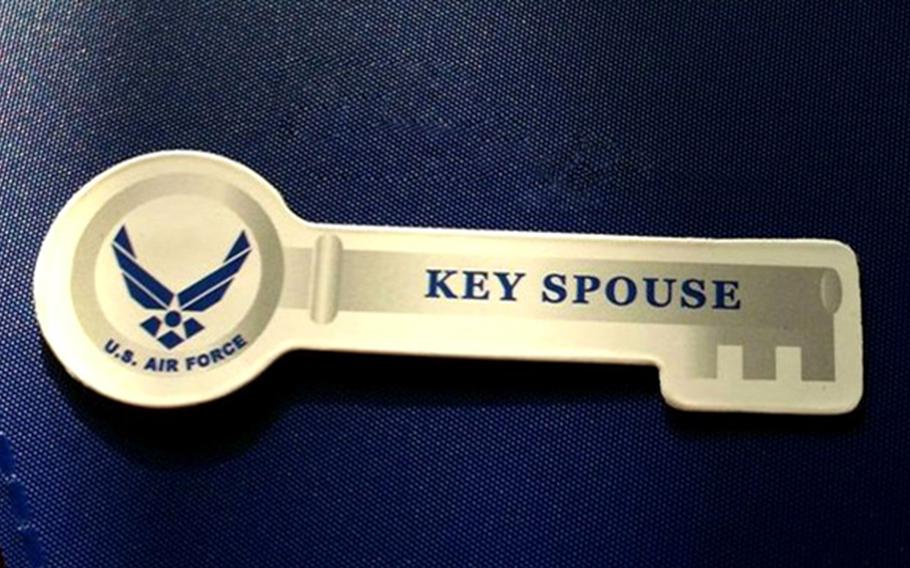
The Air Force’s Key Spouse Program has been renamed the Commander’s Key Support Program to indicate that it’s open to a wider group of people. (U.S. Air Force)
The Air Force has changed the name of its Key Spouse Program to embrace more participants and reflect the changing nature of military families.
The program has been renamed the Commander’s Key Support Program to indicate that it’s open to a wider group of people, the service announced in a news release March 14.
The initiative “plays a vital role” in connecting spouses and families to leadership and valuable resources, especially for families of deployed service members, according to the program’s website.
At Yokota Air Base in western Tokyo, for example, about 100 volunteers are serving as key support liaisons, Deven Stone, the base’s Key Support Program manager, said April 24.
Dropping the word “spouse” makes the program more inclusive to airmen who are in a dual-military marriage, Space Force guardians and civilian employees who already benefit from the program’s resources, said Kristin Ross, a key support liaison at Osan Air Base, South Korea.
“So, yes, you’re a spouse but you’re also an active-duty member,” she said April 5 at Osan. “We were losing a lot of resources by having the word spouse in the program because we have always had, and hopefully, we continue to have dual military families.”
Stone agreed.
“I think it will help it because one of the goals is readiness and connectedness and unity in that squadron or unit,” she said. “I think especially on Yokota, where spouses do [permanent changes of stations], having someone like a Japanese national that is in a key support role will help build that continuum of services.”
Specifying “spouse” in the program title prevented the Air Force from dedicating additional resources to it, while also serving people beyond the program’s original scope, Ross said.
“We also have individuals who are federal employees, [General Service] employees, [Nonappropriated Fund] employees who participate and benefit from the resources that are offered through the commander’s key support program, so they just wanted to be more inclusive,” she said.
The name and logo will change but the training requirements and basic structure of the program will remain basically the same, Ross said. Final changes to the program should be announced this month.
“Families today do not look like families looked in the 1950s. It’s not always a husband, wife and two to four children, so we have all different kinds of families,” she said. “We wanted to be sure we were including everyone in the program.”